How big was the size of the tsunami that hit Tonga last year? A new study led by scientists at the University of Miami and the Khaled bin Sultan Living Oceans Foundation measured the size of the Tongan tsunami and found that it was similar in size to the one caused by the eruption of Krakatoa in 1883.
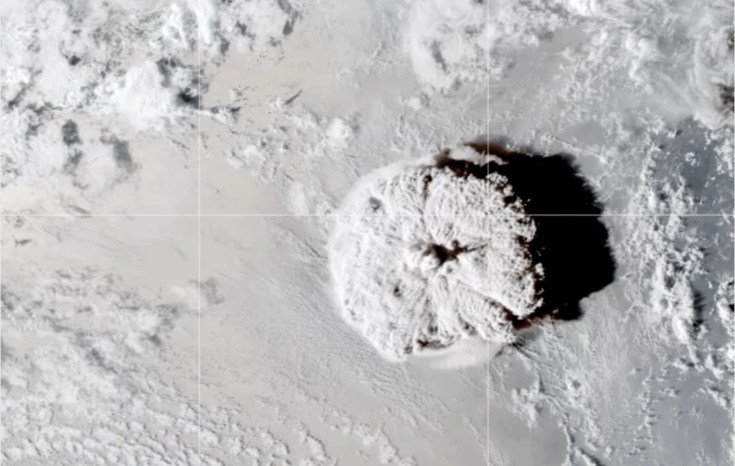
The 2022 eruption of a submarine volcano in Tonga was more powerful than the largest U.S. nuclear explosion, according to a new study led by scientists at the University of Miami Rosenstiel School of Marine, Atmospheric, and Earth Science and the Khaled bin Sultan Living Oceans Foundation.
The 15-megaton volcanic explosion from Hunga Tonga-Hunga Ha’apai, one of the largest natural explosions in more than a century, generated a mega-tsunami with waves up to 45-meters high (148 feet) along the coast of Tonga’s Tofua Island and waves up to 17 meters (56 feet) on Tongatapu, the country’s most populated island.
In a new analysis in Science Advances, researchers used a combination of before-and-after satellite imagery, drone mapping, field observations collected by scientists at The University of Auckland, and high-resolution bathymetric maps from the Khaled bin Sultan Living Oceans Foundation’s Global Reef Expedition, to produce a tsunami simulation of the Tongan Archipelago. The results showed how the complex shallow bathymetry in the region acted as a low-velocity wave trap, capturing a more than hour-long tsunami with waves up to 85 meters (279 feet) high one minute after the initial explosion.
The submarine volcanic eruption of Hunga Tonga-Hunga Ha’apai, which forms the island chain of Tonga and is a result of the convergence of the Pacific and Indo-Australian tectonic plates, rivaled the 1883 eruption of Krakatoa that killed over 36,000 people.
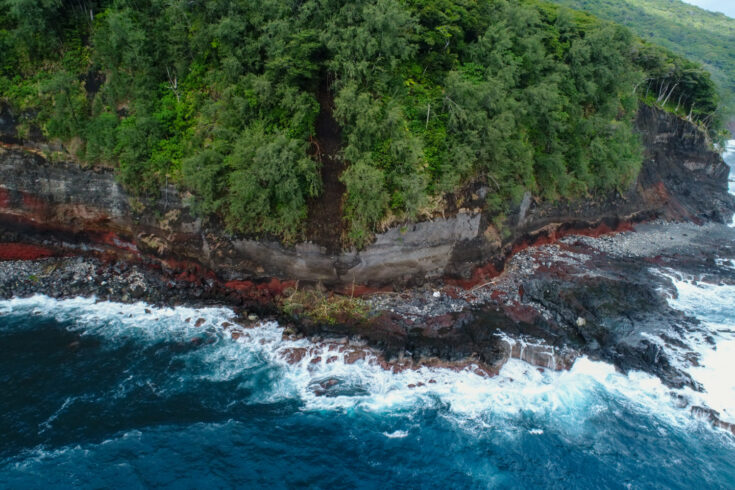
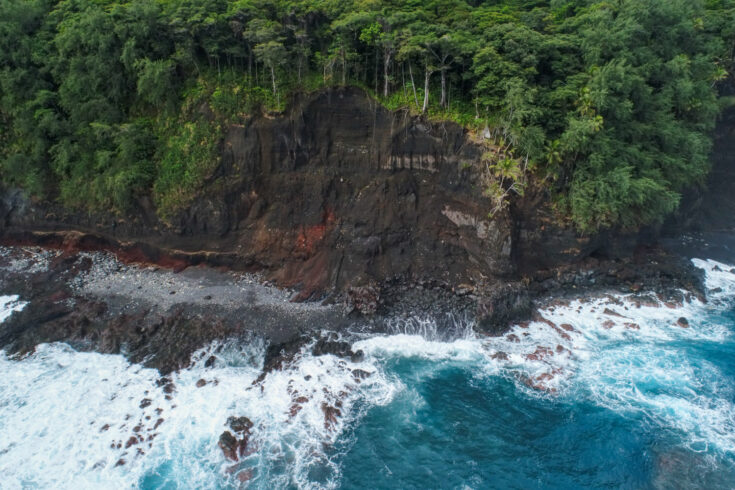
Drone shots showing the damage to the coastline Tofua, the island in Tonga which received the largest tsunami wave. Image courtesy of co-author, Dr. Shane Cronin (University of Auckland).
“Despite its size and long duration, the mega-tsumani that resulted from Hunga Tonga-Hunga Ha’apai claimed few lives,” said Sam Purkis, professor and chair of the Department of Marine Geosciences at the Rosenstiel School and chief scientist at the Khaled bin Sultan Living Oceans Foundation. “The main factors that led to this, we suggest, are the quirk of the location, the COVID-19 pandemic, and increased evaluation drills and awareness efforts carried out in Tonga in the years prior to the eruption.”
The simulation also suggested that the eruption location relative to urban centers saved Tonga from a worse outcome.
“While 2022 may have been a lucky escape, other submarine volcanoes possess the capacity to spawn a future tsunami at the same scale, said Purkis. “This eruption holds important lessons for both past and future tsunamis in Tonga and beyond. The eruption was an excellent natural laboratory to test hypotheses and models that can be deployed elsewhere to improve future disaster preparations, and better understand similar eruptions and subsequent tsunami as preserved in antiquity and in the geologic record.”
The data that made this modeling possible came from an unexpected source. In 2013, scientists from the Khaled bin Sultan Living Oceans Foundation came to Tonga to map and survey their coral reefs as part of the Global Reef Expedition (GRE), a 10-year research mission to assess the state of coral reefs around the world. As part of this research mission, scientists created ultra-high-resolution bathymetry maps of the Tongan Archipelago, which were needed to build detailed habitat maps of Tonga’s coral reefs. These bathymetry maps, which were generated from satellite imagery and acoustic measurements recorded in the field, were integral in creating the tsunami simulation.
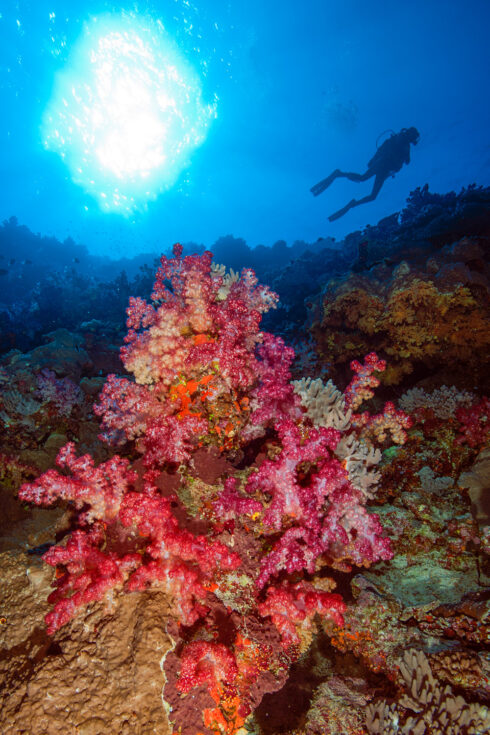
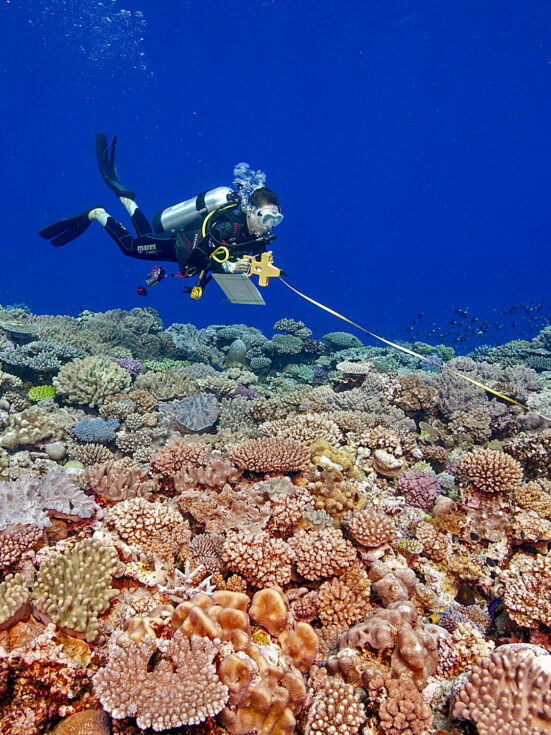
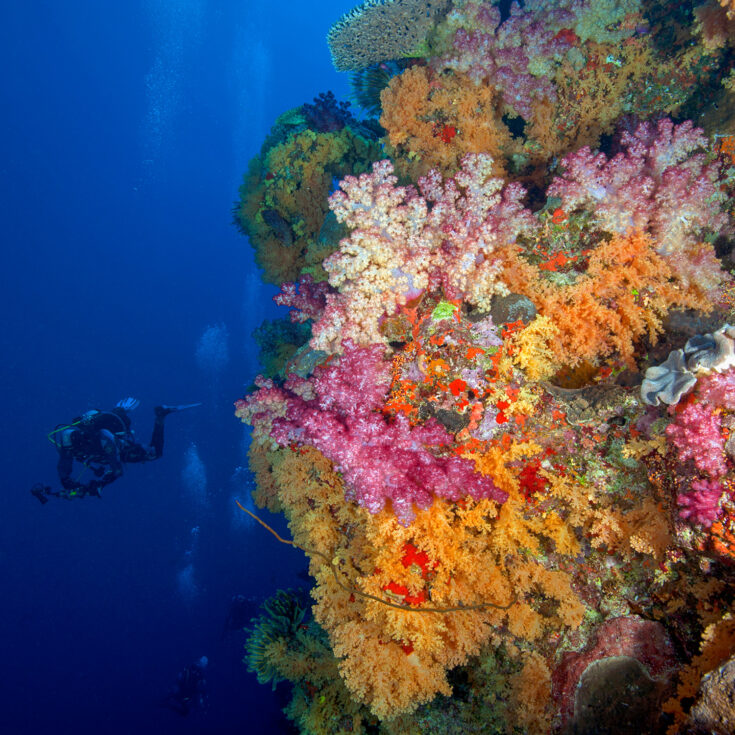
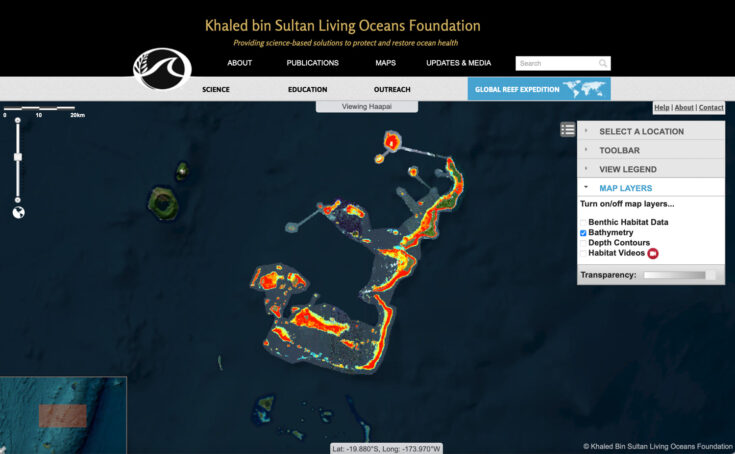
Research conducted on the Global Reef Expedition allowed us to create detailed maps of coral reefs in Tonga, including maps of the depth of the seafloor (bathymetry maps). These maps were used to model the size and impact of the Tsunami that hit the islands in January 2022.
“It is fantastic to see the Global Reef Expedition data being used not only for coral reef ecology and conservation studies in the classic sense, but that these data are important for understanding the complexity of seismically active regions in the ocean,” said Alexandra Dempsey, the Director of Science Management at the Living Oceans Foundations and one of the paper’s authors. “Time and again, the high quality of the data from the GRE is proving to pay off in dividends with new and exciting results.”
Although the data was originally collected to support coral reef conservation, this is one of the many ways data from the Global Reef Expedition is being used to advance ocean science.
As for the reefs in Tonga, Dempsey says that more surveying and reconnaissance field work is needed to truly see how the tsunami has impacted the reefs around Tonga. Having the baseline data of the state of the reefs prior to the tsunami, such as the coral reef surveys the Foundation collected on GRE, will be critical for determining those impacts as well.
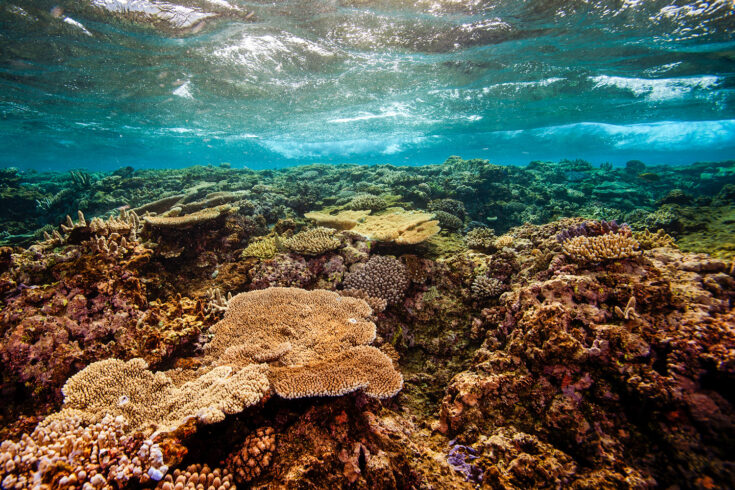
The study, titled “The 2022 Hunga-Tonga Megatsunami: Near-Field Simulation of a Once-in-a-Century Event,” was published in the April issue of Science Advances. The authors include: Sam Purkis and Nathan Fitzpatrick from the University of Miami Rosenstiel School, Alexandra Dempsey from the Khaled bin Sultan Living Oceans Foundation; Steven Ward from the University of California, Santa Cruz; James Garvin and Dan Slayback from the NASA Goddard Space Flight Center; Shane J. Cronin from the University of Auckland and Monica Palaseanu-Lovejoy from the U.S. Geological Survey.
The study was supported by grants from the Khaled bin Sultan Living Oceans Foundation – Global Reef Expedition, NASA Goddard Space Flight Center and the University of Auckland, and the New Zealand Ministry of Business, Innovation and Employment, Endeavour Fund Project.